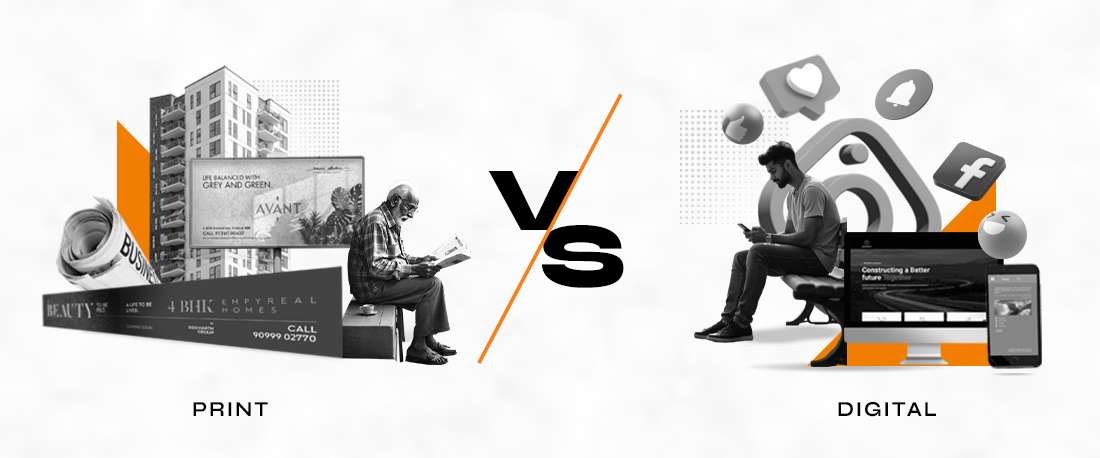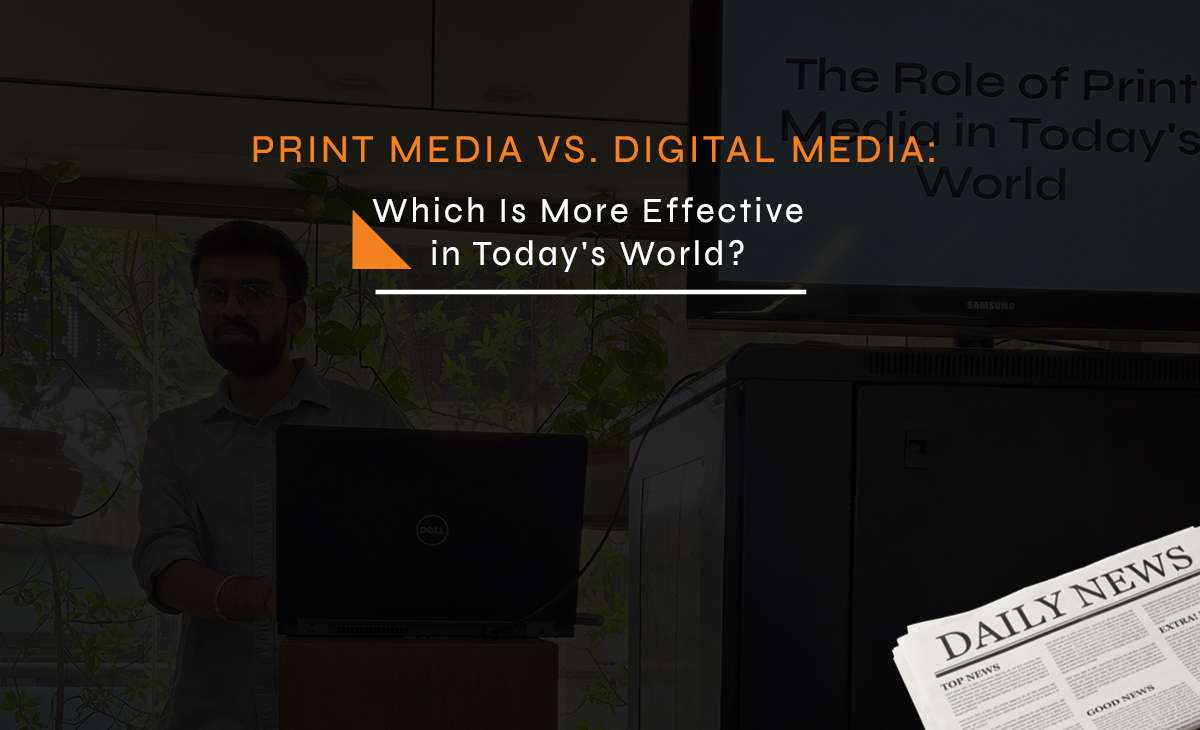In modern times, choosing between print and digital media has a huge impact on your marketing plan. This blog analyzes their strengths, problems, and relevance to assist you figure out which medium is best suited to modern trends and audience interaction.
What is Print Media?
Print media includes any type of media that is printed on paper or other physical materials such as magazines, brochures, and flyers. It includes many types of conventional media that are generated in print form and provided to the public. It uses printed materials for spreading news, advertisements, and information, providing a physical and visual experience.
Types of Print Media
Newspapers: Widely distributed publications that include daily news, opinions, and advertisements.
Brochures: Folded documents that include brief information about products, services, or events.
Catalogs: Comprehensive books explaining a brand’s product or service offerings in detail.
Banners: Large, attractive billboards are used for announcements or marketing during events or in public areas.
Posters: Stunning prints with a message meant to be communicated; frequently used for awareness-raising or advertising.
Stationery: Business cards, envelopes, and letterheads with personal branding that are used for official interactions.
Magazines: Colorful books with stories, ads, and articles targeted to particular hobbies or sectors.
What is Digital Media?
Any type of media content created, shared, and accessed via digital technologies is referred to as digital media. Digital devices such as computers, smartphones, and tablets are used to deliver a variety of formats and platforms, such as text, photos, audio, video, and interactive information. Brands may make better use of these channels for greater exposure and interaction by working with a digital marketing agency Ahmedabad.
Types of Digital Media
Owned Media: Content that you control, such as websites, blogs, and email newsletters, is used to create long-term relationships with your target audience.
Paid Media: Advertisements like social media ads, PPC campaigns, and sponsored content designed to drive traffic or conversions.
Shared Media: Content distributed on social platforms where engagement and virality amplify reach (e.g., social media posts).
Streaming Media: Audio and video content delivered over the internet, such as YouTube videos or Spotify playlists.
E-Publications: Digital versions of books, magazines, and journals accessible on devices or apps like Kindle or Apple Books.

Role of Print Media in Advertising
Print media still plays an important role in advertising, despite the rapid growth of digital platforms. Its real and genuine nature makes it a reliable medium for targeting certain audiences.
-
Trust and Reputation
Print media, such as newspapers and magazines, is often seen as more trustworthy and reliable than digital ads. This credibility helps build trust with the audience.
-
Targeted Reach
Magazines and business publications engage narrowed audiences, allowing advertisers to successfully target particular age categories or interest groups. A branding company in Ahmedabad can assist in creating eye-catching print advertisements for customized campaigns that appeal to particular target populations.
-
Significant and Lasting Impact
Unlike digital ads, which can disappear with a scroll, print ads are physical and can be saved for future reference. They frequently leave a more lasting impression on the viewer.
-
High Engagement
Readers spend more time engaging with print items, giving for a stronger connection with the advertisement.
-
Trust Among Older Audiences
Older audiences, who may not use digital media frequently, depend largely on print for information, making it an important channel for marketers targeting this group.
-
Improvement of Digital Campaigns
As an element of multiple marketing strategies, print media can increase the success of campaigns by directing users to digital platforms via URLs or QR codes.
What Makes Digital Media More Popular Than Print Media?
-
Accessibility and Convenience
Digital content can be viewed at any time and from any location using only a device and an internet connection. Smartphones and tablets make it simple to consume media on the go.
-
Wider Reach
Unlike print media, digital platforms enable marketers to engage with people globally. Digital media is more relevant for rapidly evolving businesses since news and updates can be released and consumed instantly. Businesses may effectively reach this worldwide audience by working with a top digital marketing agency in Ahmedabad, which can increase traffic and conversions.
-
Measurable Performance
Digital campaigns include certain data such as clicks, impressions, and conversions, allowing marketers to accurately analyze ROI. Marketers may rapidly modify campaigns based on performance data.
-
Sustainability
Digital media reduces the need for paper and printing, which fits into the growing need for environmentally friendly activities.
-
Faster Production and Distribution
Content can be developed and distributed instantly, whereas print media requires a longer production cycle.
-
Attract Younger Audiences
Digital platforms are preferred above print media by younger, tech-savvy generations.
The performance of print versus digital media in today’s tech-driven and fast-paced world primarily depends on the target audience, campaign objectives, and industry factors. Digital media shines with its wider reach, real-time data, and affordability, while print media provides trust, real content, and a niche appeal. If you’re looking for distinctive solutions targeted to your specific needs, working with a reputable advertising agency in Ahmedabad like BRIM may help you create compelling campaigns that connect with your target audience and maximize your ROI.





